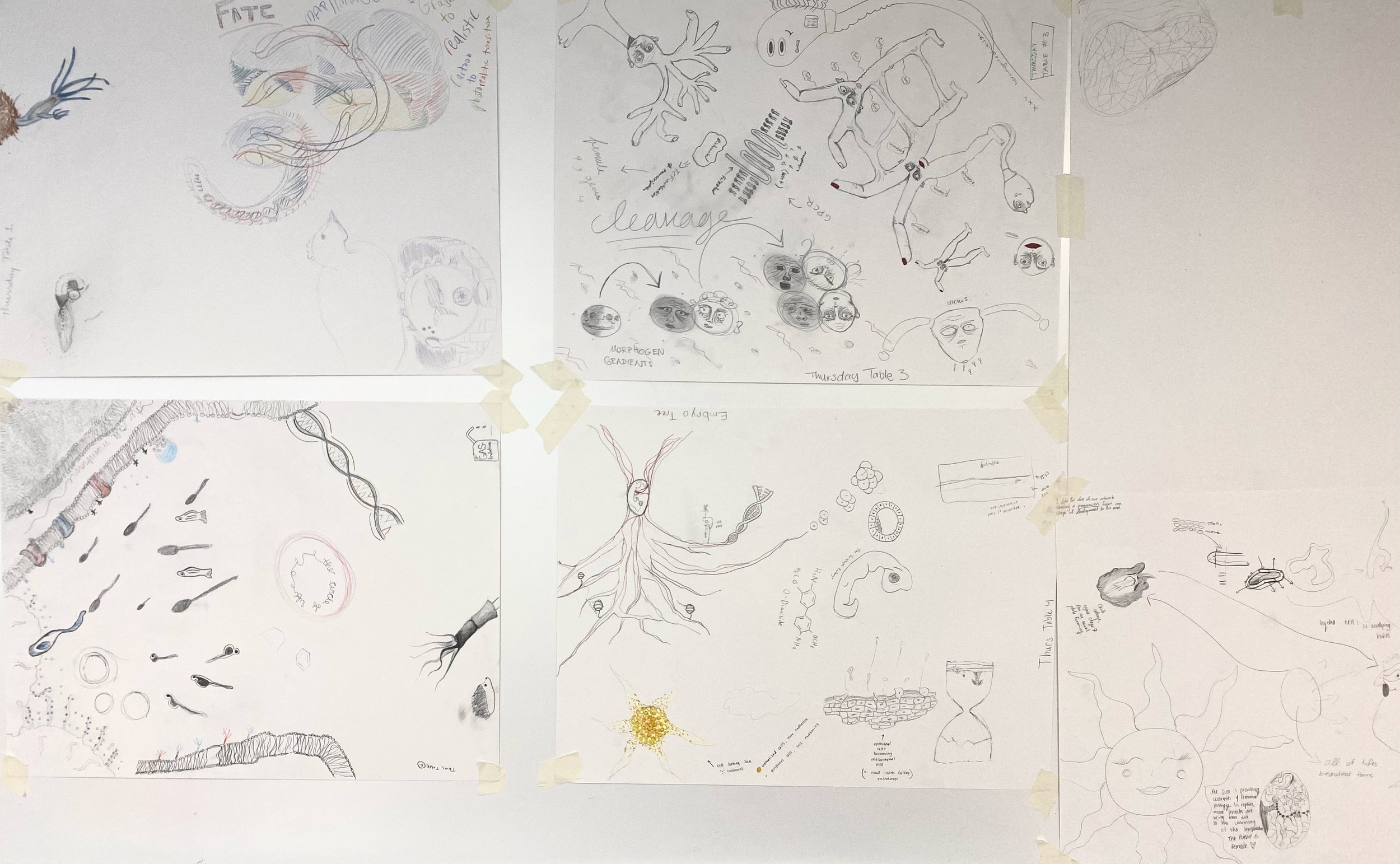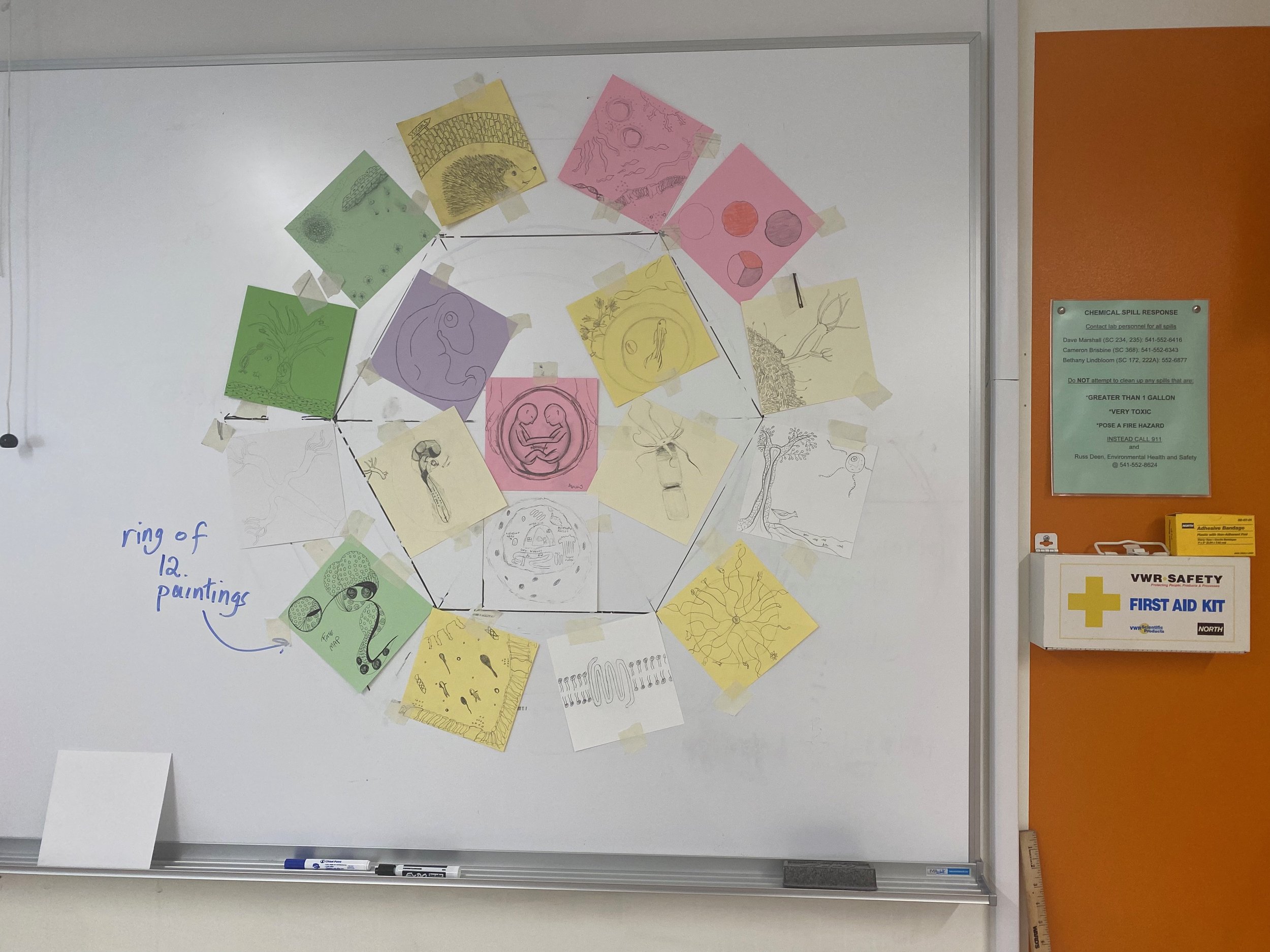New Legacy Project Part 5: Skipping Ahead 50 Years
In my last update, I recalled my participation in the Alvarado Art Workshop between 1974 and 1976 as an Artist in the Schools. This month, life comes full circle to my most recent project, once again working as an artist in the schools, but this time with a developmental biology class at Southern Oregon University. Aside from helping students understand developmental biology by utilizing parts of their brain other than the prefrontal cortex, another goal [of mine and their professor] was to move them beyond their fear of “making art,” as if using their hands and brain to draw was something unnatural and impossible to learn.
The project ran for 5 weeks. First, I showed the whole class some of my own science-inspired artwork, then met with each student one-on-one to find out what interested them, excited them the most. Next they were instructed to draw simple sketches or doodles illustrating what they were excited about.
Early pencil sketches, cartoons, doodles drawn by small groups on 20” x 26” paper, then displayed on the classroom white board.
Based on those first black-and-white drawings, pairs of students developed their ideas on 6.5” square colored paper. All the drawings were displayed on the white board for everyone to see, learn from, be inspired by. I designed the ring-around-the-octagon arrangement.
Display of second set of drawings.
After tinting their watercolor paper, students worked in pairs to create their final painting.
Two students working with gouache paint and various size brushes on a painting.
This example of a final painting shows important steps in the development of two chickens’ zygotes into an embryo: from sperm and egg cell to the blastopore, gastrula and pharyngula stages — [Are you finding it hard to memorize those terms? Drawing a picture really helps.]— to an embryo just 2-3 days before hatching..
Final painting of the stages of chicken embryo development.
Just a few days before graduation, the students got to see the whole ensemble in the conference room of the Biology Department. Feedback from their evaluation sheets showed that they felt they learned the science better and enjoyed the drawing and painting. Many wrote that if they could do a similar project again, the one thing they would want would be MORE TIME.
So what’s next? Having just read the book, Your Brain on Art: How the Arts Transform Us, I plan to present a PowerPoint talk about this DevBio-SciArt project to a creativity organization or conference like the one held at SOU earlier this year. At long last, the neuroscientists have gotten on the bandwagon to prove to us with brain scans and neurochemical tracking why art is good for us humans. Ellen Dissanayake, in her book Homo Aestheticus, back in 1992, showed us why art is necessary . Now CREATIVITY is the new buzzword, and ART its latest magic wand to relieve many of our individual and societal traumas and woes. Let’s hope that artists and art educators will now get more money to do their work. Or will the major beneficiaries of this interest in creativity be the neuroscientists, psychologists, and data-collecting-and-processing academicians?
Do you know any institutions, conferences, publications, individuals that you believe should know about this DevBio-ArtSci project and might want to fund another similar project? Let me know whom to contact, please.






